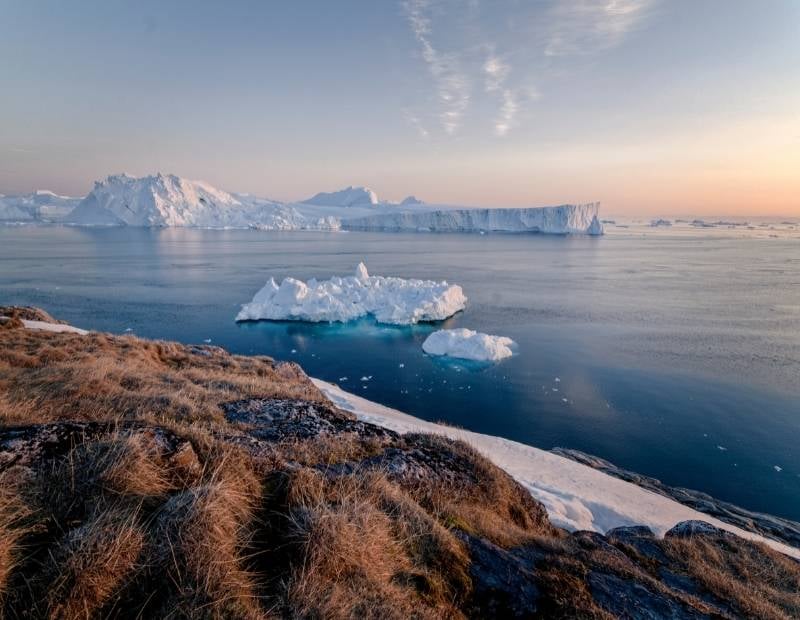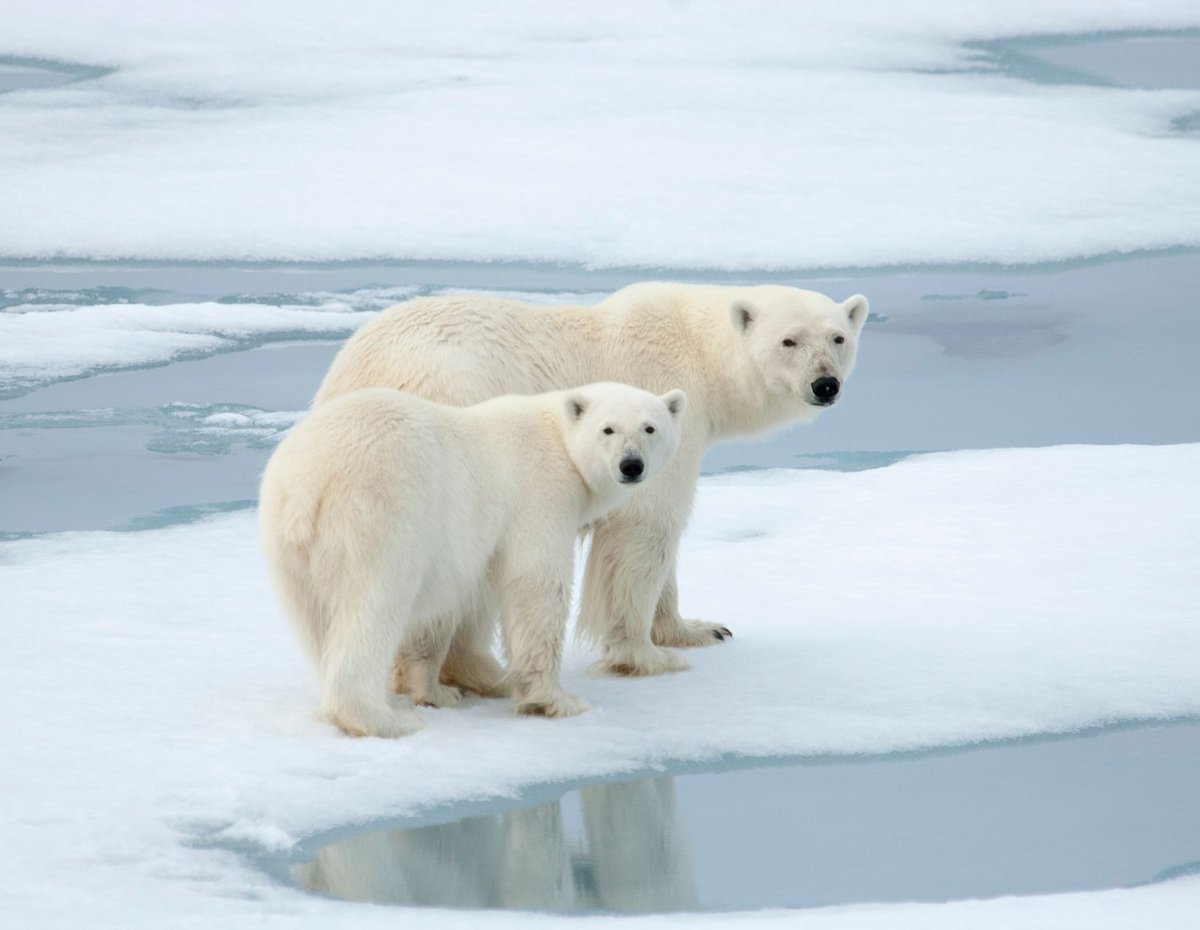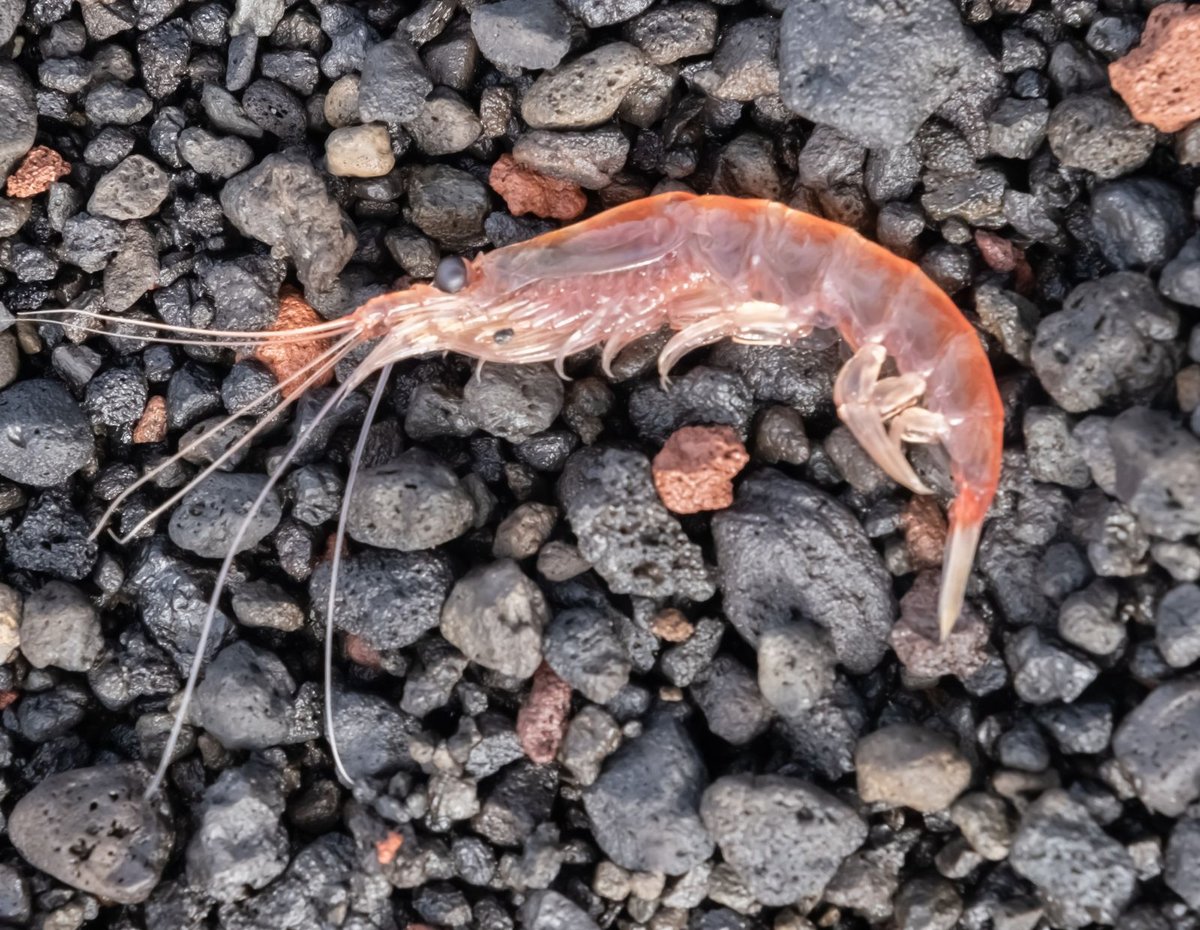Famously, and perhaps erroneously, the Inuit are supposed to have fifty different words for snow, from “snowflake” and “soft deep snow” to “fresh snow” and “snow on ground”. And yet besides a healthy covering of frozen water for most times of the year, what do the most extreme parts of our planet, the Arctic and Antarctic, really have in common?
The poles
Loosely formed around ever changing magnetic north and south poles, both the Arctic and Antarctic experience similar phenomena due to their 90° latitudes. Bounded by either the Arctic or Antarctic Circle, both poles experience both the midnight sun and polar night, which sees the North Pole and South Pole live through two months of constant darkness in winter and two months of perpetual brightness in summer.
Collecting around the north and south poles, both the Antarctic and Arctic have magnetic solar winds which create both Northern and Southern Lights, the Aurora borealis and Aurora australis. And as well as other natural phenomena, such as seeing a halo around the sun or being able to hear people from further away (as soundwaves are flattened), there’s also no time zone at either of the poles, where any local time can be used.
The icy tundra

Unlike the Antarctic continent however, the Arctic is not comprised of any land and is in fact a floating mass of ice and glaciers. The most northerly point of land is in fact highly contentious – with Kaffeeklubben Island in Greenland the least disputed. A landmass surrounded by ocean, the Antarctic is substantially colder than the Arctic, an ocean surrounded by landmasses. And it’s perhaps due to this proximity of land around the Arctic, such as the Svalbard archipelago or northern Norway, Greenland, Finland or Siberia, that tundra is often considered to be a uniquely Arctic kind of flora. The Antarctic does however have its own treeless vegetation on islands such as South Georgia, the South Sandwich Islands, and the Falkland Islands, with over 750 species of mosses, liverworts and lichens, including flowering species such as Antarctic hair grass and the Antarctic pearlwort.
Fauna at both poles

The polar bear, the Arctic’s most emblematic predator, does of course live exclusively in the north, evolving from brown bears in eastern Siberia about 20,000 years ago. Now on the brink of extinction due to the rapid loss of sea ice in the Arctic, and the subsequent loss of the bear’s hunting grounds, it has been suggested that polar bears could be rehomed in the Antarctic. And while the habitats might be similar enough to support polar bears, the absence of other large predators around the South Pole has led to penguins and seals in the Antarctic becoming relatively fearless, a trait which would undoubtedly make them an easy meal for roaming polar bears.
The only animals in fact to be found at both poles are the arctic tern, which has the longest migration of all birds, flying 40,000 kilometers from its breeding grounds near the North Pole to the Antarctic for the winter. Orcas can also be found in both the Arctic and Southern Oceans but tend not to migrate such large distances. The pods of killer whales found in the Antarctic are therefore not likely to be the same ones spotted in the frigid waters of the north. Both poles are also home to many similar species of zooplankton, such as krill and copepods, as well as cold-water worms, crustaceans, and sea cucumbers.
In the water

While krill exist in both the Arctic and Antarctic, the Antarctic krill is larger and found in abundance in the Southern Ocean, at times in swarms of up to 30,000 individual crustaceans per cubic meter, making it a vital food source for baleen whales, seals, and penguins. While not as essential to the food chain in the North, other crustaceans such as shrimp and mollusks are vital to uniquely Arctic species such as the narwhal and walrus. Feeding in shallower seas (the Southern Sea is almost twice as deep as the Arctic Ocean), the walrus forages the coastline for its favorite meal of clams, which it sucks out from its shell.
With 5000 invertebrates living in the freezing waters of the Arctic, including almost 250 species of fish and approximately 1600 different crustaceans, the sheer abundance of life at the lower end of the food chain creates a much more diverse ecosystem in the north, with many species able to live in the Arctic all year round. Although many species including walruses and seals do in fact migrate large distances within the far north.
On land and in the skies
-1.jpg?width=1200&height=930&name=arctic%20(2)-1.jpg)
There are six species of seal in the Arctic Ocean, including the bearded seal, harp seal, hooded seal, ribbon seal, ringed seal, and spotted seal. One of the Arctic’s most iconic animals, the harp seal, with its white-furred pups, breeds on the ice, the mother abandoning its pups after weaning it for a couple of weeks. With predators outside of the water, camouflage is much more important in the Arctic for both predators and prey, with many species such as Arctic foxes, Arctic hares, harp seals and polar bears developing white fur in their evolution to hide them from the watchful eyes of both predators and prey.
One of the most noticeable differences between the Arctic and Antarctic however is the sheer number of birds that can be found in the Arctic, especially in summer. With over 280 species of bird summering here, including puffins, cormorants, eiders, gannets, buntings, snowy owls and peregrine falcons, the Arctic skies can at times come alive with wingbeats, especially on cliffs such as Nunavut or Baffin Bay in Canada or Gnålodden in Svalbard.
Mankind
.jpg?width=1200&height=930&name=arctic%20(3).jpg)
The biggest difference however between the Arctic and Antarctic is undoubtedly the presence of man. With over 4 million people living in the Arctic, habitats are more susceptible to being impacted by agriculture and livestock, with both creatures in the sea and on land hunted for their meat, fat or fur. Man’s impact in the form of global warming is also more visible in the Arctic, with sea ice being lost at an alarming and visible rate – at 13% per decade. Scientists estimate, with no changes to our carbon emissions, that the Arctic could be ice-free from as soon as 2040.
It's well known that polar bears are under threat from extinction, but they’re not the only ones that rely on the sea ice for their survival. Walruses use the pack ice for calving and have now been forced on land where they are prey to both man and other predators. The habitats of beluga whales and narwhals are at risk where they have been exploited by humans, with mining installations both on land and at sea. While muskox, narwhals, and Arctic foxes are at risk from over hunting. The Eskimo Curlew or prairie pigeon is already believed to be extinct.
So, if you’re interested in seeing for yourself the differences between the Antarctic and the Arctic, why not take a look at our Arctic cruises here and our Antarctic cruises here.




